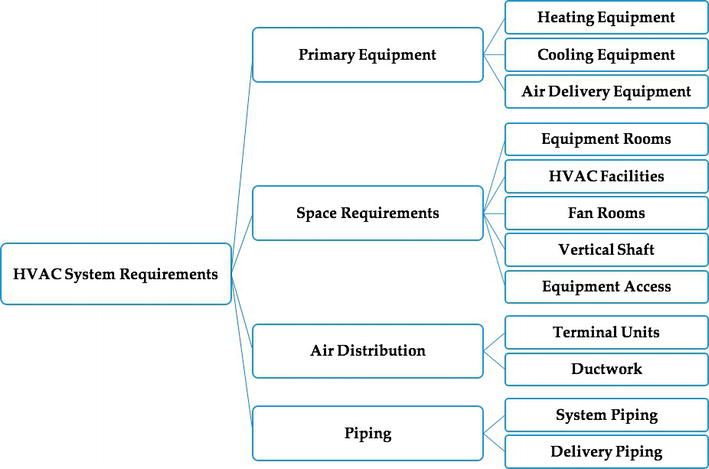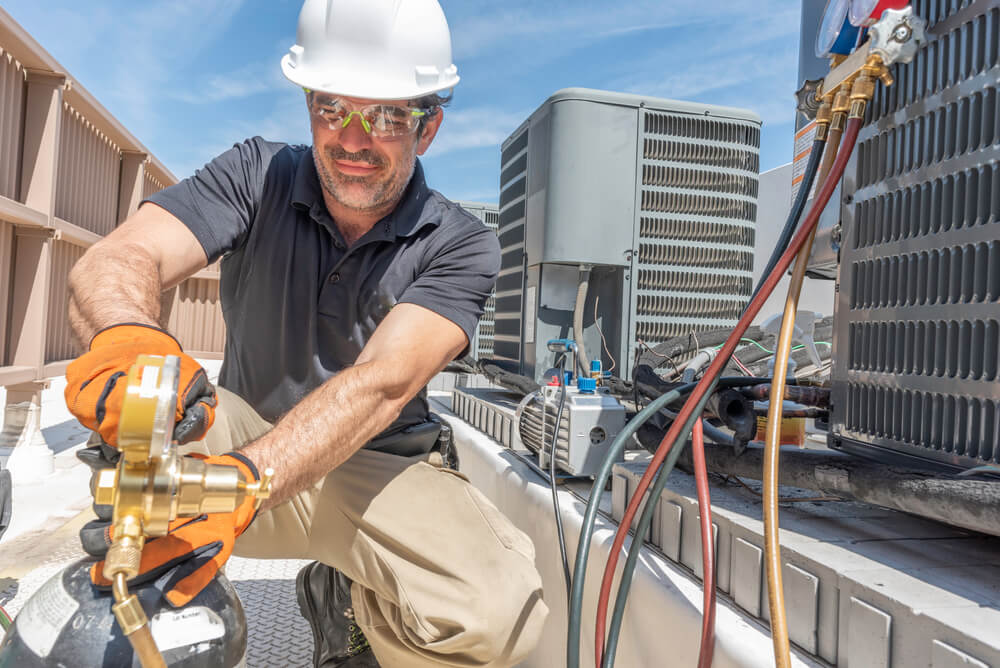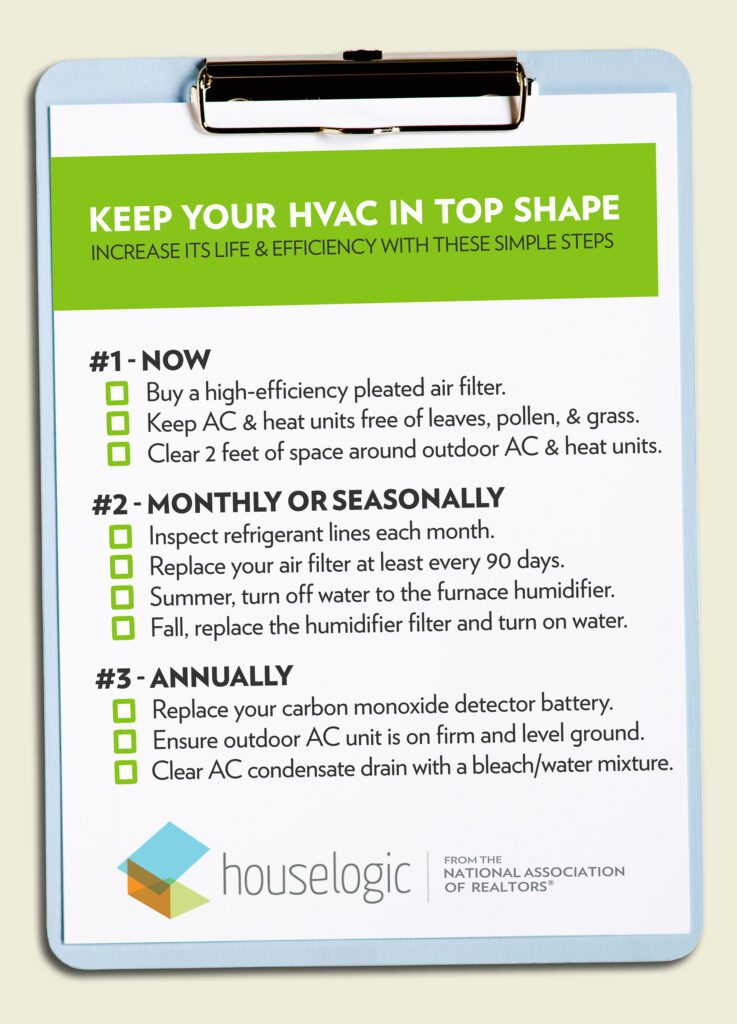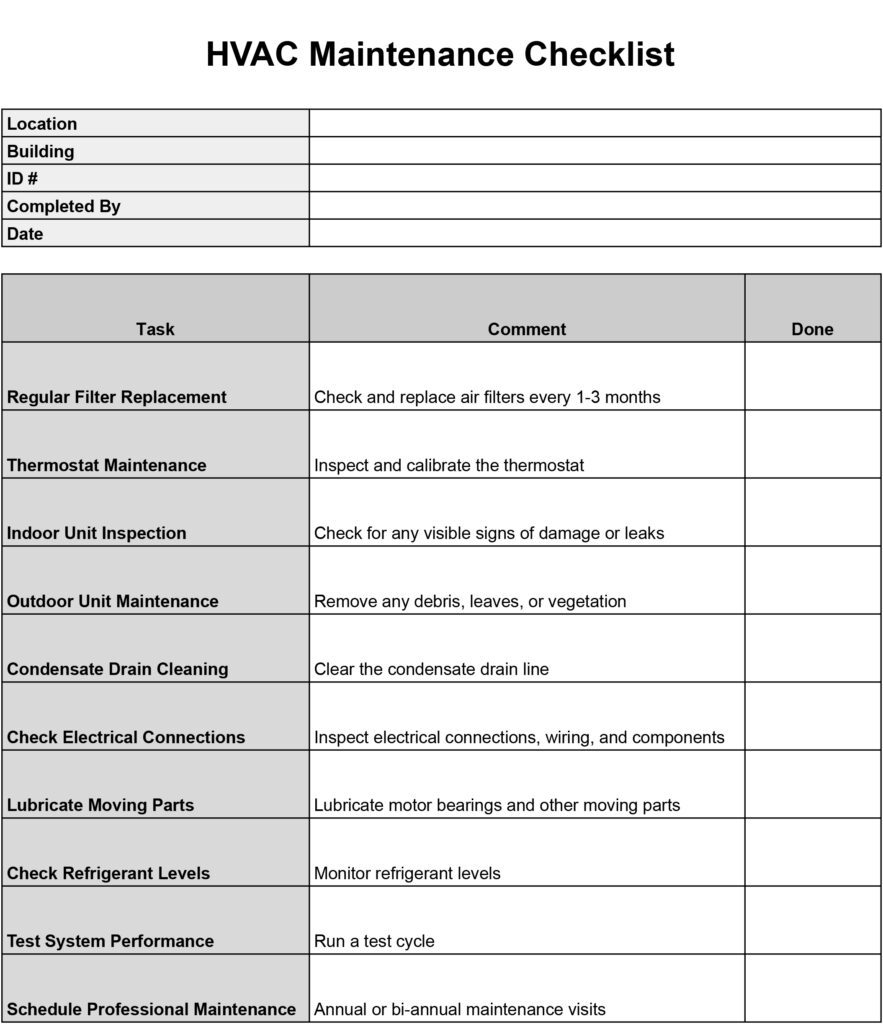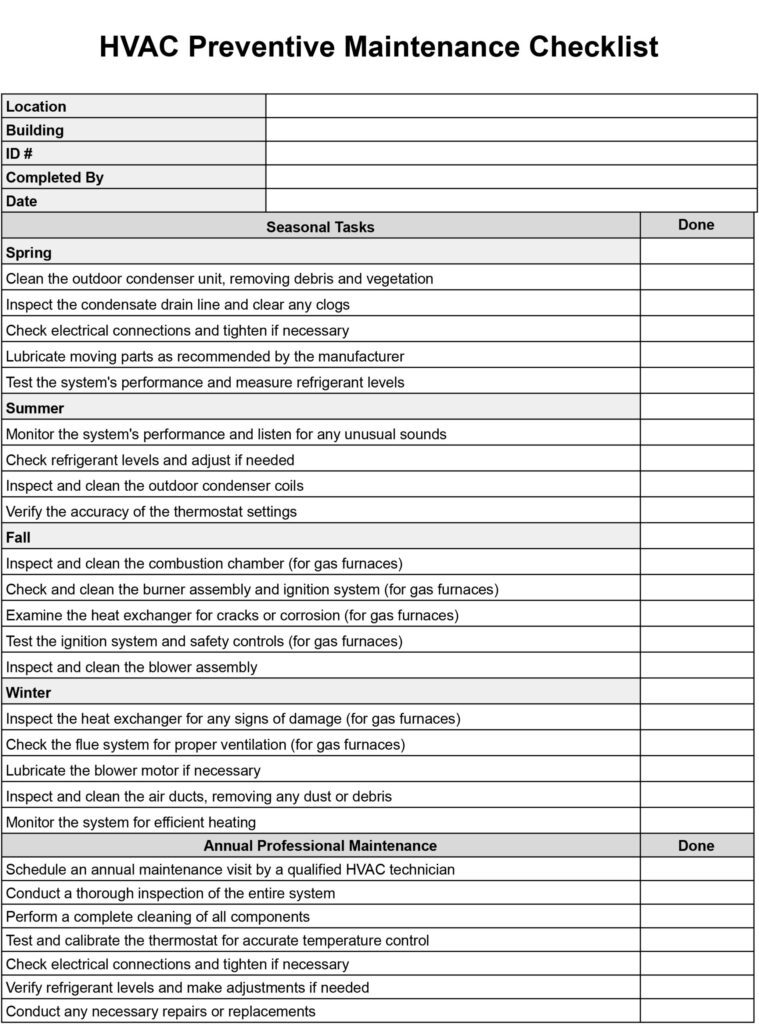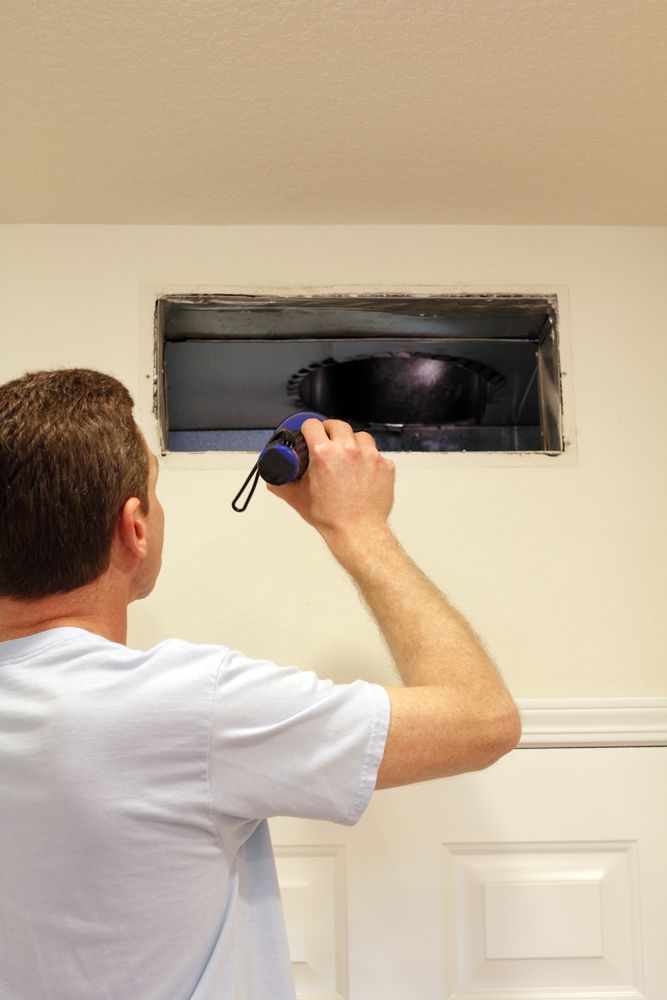Today we are going to explore the fascinating world of HVAC systems and uncover the four main types that you need to know about. HVAC systems play a crucial role in keeping our homes and workplaces comfortable, and understanding the different types can help you make informed decisions when it comes to heating and cooling. Whether you’re a homeowner looking for the perfect system for your new house or simply curious about the inner workings of HVAC technology, this article will provide you with a clear and concise overview of the four main types of HVAC systems. So, let’s get started and discover what these systems are all about!
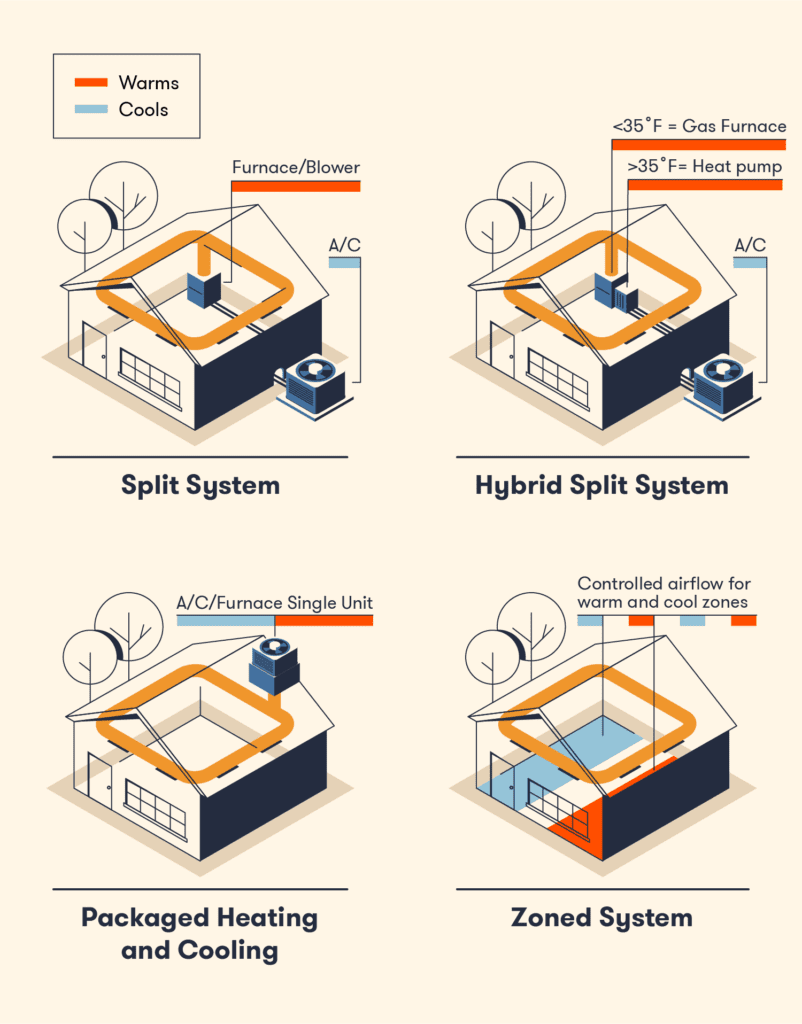

Introduction
When it comes to maintaining a comfortable temperature in your home, HVAC systems play a vital role. HVAC, which stands for Heating, Ventilation, and Air Conditioning, is responsible for maintaining the desired temperature and humidity levels in your home. There are four main types of HVAC systems that are commonly used: central air conditioning systems, ductless mini-split systems, window air conditioning units, and portable air conditioning units. In addition to these, there are also various heating systems such as forced air heating systems, radiant heating systems, hydronic heating systems, and geothermal heat pump systems. In this article, we will explore each of these systems in detail to help you understand which one is best suited for your needs.
Central Air Conditioning Systems
The central air conditioning system is one of the most popular types of HVAC systems found in homes today. It consists of three main components: the condenser unit, the evaporator coil, and the air handler. Central air conditioning systems are further categorized into three types: split systems, packaged systems, and heat pump systems.
Split Systems
Split systems are the most common type of central air conditioning system. As the name suggests, these systems consist of two separate components: an outdoor unit called the condenser and an indoor unit called the evaporator coil. The condenser is usually placed outside the house, while the evaporator coil is installed inside, typically in the basement or attic. This type of system is highly efficient and provides effective cooling throughout the house.
Packaged Systems
Packaged systems are an all-in-one solution where all the components, including the condenser, evaporator coil, and air handler, are housed in a single unit. These units are usually installed on the roof, a concrete slab next to the house, or in a crawl space. Packaged systems are a good option if you have limited indoor space or if you live in a region with mild climates.
Heat Pump Systems
Heat pump systems are a versatile option that can provide both heating and cooling. They work by transferring heat from one place to another, depending on whether you want to cool or heat your home. During summer, the heat pump removes heat from the indoor air and transfers it outside, providing cooling. In winter, the process is reversed, and the heat pump extracts heat from the outdoor air and transfers it indoors, providing heating. Heat pump systems are energy-efficient and can save you money on your utility bills.
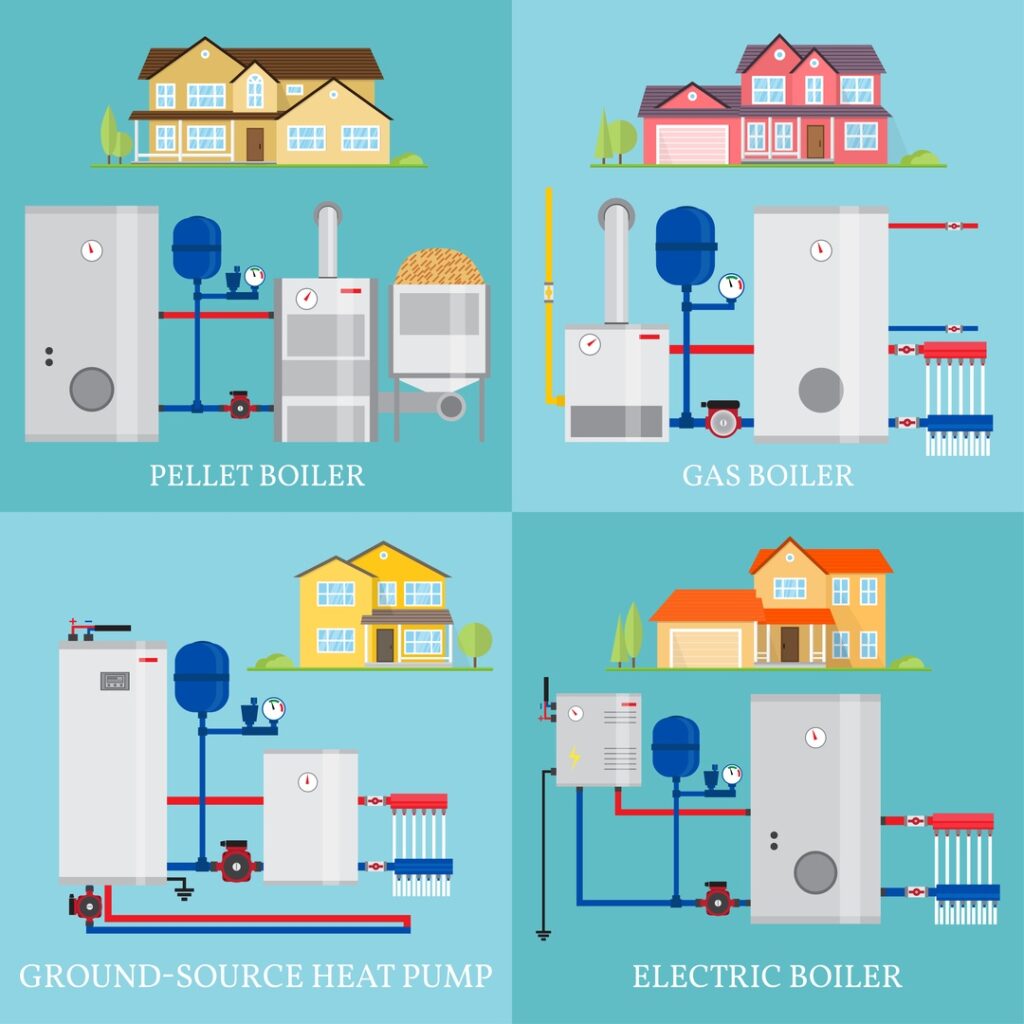

Ductless Mini-Split Systems
Ductless mini-split systems are another type of HVAC system that is gaining popularity. These systems consist of two main components: an outdoor unit, similar to the condenser in a central air conditioning system, and one or more indoor units. The indoor units are typically mounted on the wall, ceiling, or floor and are connected to the outdoor unit by refrigerant lines. Ductless mini-split systems offer greater flexibility in terms of installation and zoning, allowing you to cool or heat specific areas of your home independently.
Wall-Mounted Units
Wall-mounted units are the most common type of indoor units in ductless mini-split systems. These units are installed high on the wall and provide efficient cooling and heating. They are available in various sizes and styles to suit your aesthetic preferences.
Ceiling Recessed Units
Ceiling recessed units are installed flush with the ceiling, providing a seamless look. These units are ideal for rooms with limited wall space or for those who prefer a more discreet appearance. Ceiling recessed units offer excellent cooling and heating performance.
Floor-Mounted Units
Floor-mounted units are installed near the floor level, making them ideal for rooms with large windows or limited wall space. They are designed to distribute air evenly across the room and are a popular choice for bedrooms and living rooms.
Window Air Conditioning Units
Window air conditioning units are a popular choice for cooling individual rooms or small spaces. As the name suggests, these units are designed to be installed in a window frame. They consist of a single unit that contains all the components, including the evaporator coil, condenser, compressor, and fan. Window air conditioning units are easy to install and offer convenient cooling for a specific area.
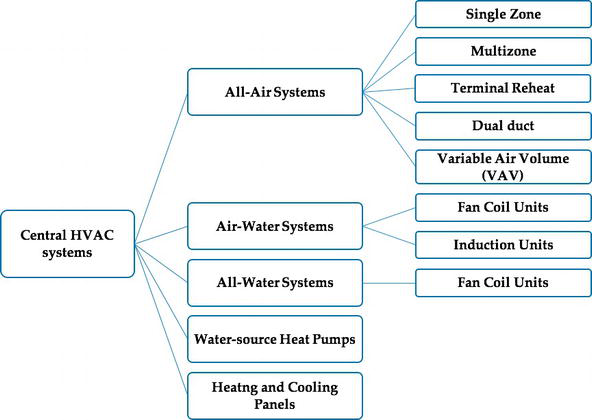

Portable Air Conditioning Units
Portable air conditioning units are versatile and offer a flexible cooling solution. These units consist of a single self-contained unit that can be easily moved from room to room. Portable air conditioning units are available in two types: single hose units and dual hose units.
Single Hose Units
Single hose units have one hose that vents the warm air outside while drawing in fresh air from the room. These units are easy to install and are suitable for small to medium-sized rooms.
Dual Hose Units
Dual hose units have two hoses: one for venting the warm air outside and another for drawing in fresh air from outside. These units provide more efficient cooling and are ideal for larger rooms or spaces with higher heat loads.
Forced Air Heating Systems
Forced air heating systems are the most common type of heating systems found in residential properties. These systems use air as the medium to transfer heat throughout the house. There are two main types of forced air heating systems: gas furnaces and oil furnaces.
Gas Furnaces
Gas furnaces are the most widely used type of forced air heating system. These furnaces burn natural gas or propane to produce heat, which is then distributed throughout the house using ductwork and vents. Gas furnaces are highly efficient and provide fast and consistent heating.
Oil Furnaces
Oil furnaces, as the name suggests, use oil as the fuel source for generating heat. Similar to gas furnaces, oil furnaces distribute heat through ductwork and vents. While oil furnaces are less common than gas furnaces, they can be a good option for areas where natural gas or propane is not readily available.


Radiant Heating Systems
Radiant heating systems work by using heat radiation to warm the objects and surfaces in a room, rather than heating the air. This type of heating system offers a comfortable and energy-efficient way to warm your home. Radiant heating systems can be categorized into three main types: radiant floor heating, radiant ceiling panels, and radiant baseboard heating.
Radiant Floor Heating
Radiant floor heating is installed under the flooring surface, providing comfortable warmth from the ground up. This type of system uses either electric resistance cables or water-filled pipes to generate heat. Radiant floor heating is a popular choice for bathrooms, kitchens, and living areas.
Radiant Ceiling Panels
Radiant ceiling panels are installed in the ceiling and emit heat downwards, warming the room below. These panels are typically made of materials that can absorb and radiate heat effectively. Radiant ceiling panels are a good option if you have limited floor or wall space.
Radiant Baseboard Heating
Radiant baseboard heating is installed along the baseboards of the room and emits heat upwards. This type of heating system is a cost-effective option as it can be easily retrofitted into existing homes. Radiant baseboard heating provides consistent and comfortable heat distribution.
Hydronic Heating Systems
Hydronic heating systems utilize hot water or steam to provide heating. These systems are highly efficient and offer consistent and even heat distribution. Hydronic heating systems can be categorized into three main types: hydronic baseboard heaters, radiators, and boilers.
Hydronic Baseboard Heaters
Hydronic baseboard heaters are installed along the baseboards of the room and use hot water to provide heating. These heaters consist of a heating element enclosed in a metal housing. Hydronic baseboard heaters offer silent and efficient heating and are a common choice for bedrooms and living areas.
Radiators
Radiators are another type of hydronic heating system that uses hot water or steam to provide heating. These are often found in older homes and can be either wall-mounted or free-standing. Radiators offer effective heating and can add a classic and elegant element to your home decor.
Boilers
Boilers are the heart of hydronic heating systems as they generate hot water or steam. These units use natural gas, oil, or electricity to heat the water or produce steam, which is then circulated through pipes to heat the space. Boilers are highly efficient and provide reliable heating throughout the house.


Geothermal Heat Pump Systems
Geothermal heat pump systems are the most energy-efficient option for both heating and cooling. They harness the stable temperature of the earth to regulate the temperature in your home. Geothermal heat pump systems consist of a series of underground pipes, known as a ground loop, which circulate a fluid to extract heat from the earth during winter or dissipate heat into the earth during summer. This heat is then transferred to or from the house using a heat pump. Geothermal heat pump systems are environmentally friendly and can significantly reduce your energy consumption.
Conclusion
In conclusion, there are various types of HVAC systems to choose from depending on your specific needs. Central air conditioning systems, ductless mini-split systems, window air conditioning units, and portable air conditioning units provide effective cooling solutions. Forced air heating systems, radiant heating systems, hydronic heating systems, and geothermal heat pump systems offer efficient heating options. Understanding the advantages and features of each system can help you make an informed decision and create a comfortable living environment in your home. Remember to consult with HVAC professionals to determine the best system for your needs and ensure proper installation and maintenance. Stay comfortable!

